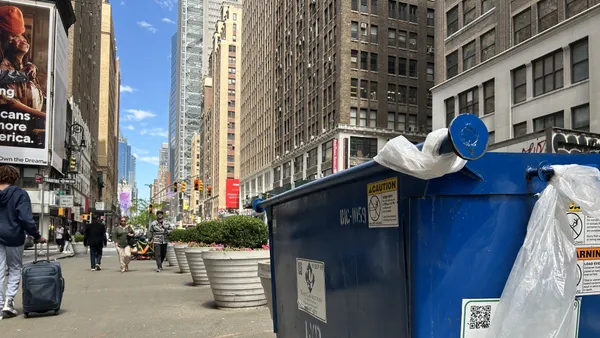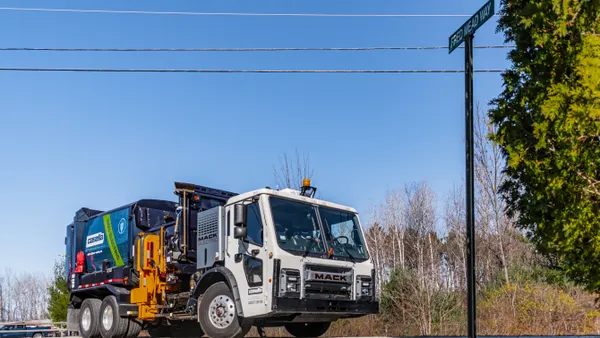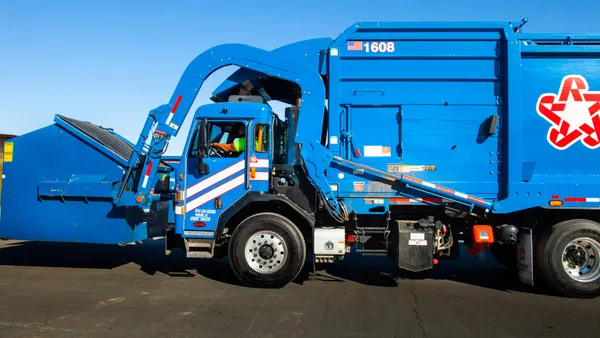Dive Brief:
- Rubicon Global and the Georgia Institute of Technology announced a partnership to design an exoskeleton for waste collectors to wear to improve health and safety on the job.
- Development of the exoskeleton will take place at the Georgia Tech's Exoskeleton and Prosthetic Intelligent Control (EPIC) Labs where Dr. Aaron Young is leading the project. "What made this partnership happen was really looking at, how can we augment these workers so that they'll be safer, more efficient on the job and be able to do their tasks easier with some wearable technology?" Young told Waste Dive in an interview.
- Young explained the first step of this process is identifying "the difficult motions of lifting ... What is that motion, and what parts of the body are being strained the most?" Once these areas are identified, the teams will begin drafting the exoskeleton designs and building prototypes to be tested on various waste collectors in the area.
Dive Insight:
Though development of the exoskeleton is in its very early stages, the final product could drastically benefit waste collectors (both men and women) in their day-to-day operations. Young explained there is an intensive level of research that will go into the project, beginning with volunteers — recruited by Rubicon — who will be assessed based in their ranges of motion.
"We can calculate what their internal joint torque and inter contact bone forces — so their joint stresses — are when they're moving," Young said. "So we'll have them do the same task that they would do out in the field, but in a structured biomechanics lab. We'll use motion capture and force plates, as well as what we call EMG or electromyography, which is basically a technique where we can measure how strong the muscles are activating so we can look at their overall muscle activation pattern as they're doing this task." He went on to explain that these various tests will determine the best way to design the exoskeleton.
Young said there is often a different "technique or structure" in how women perform such tasks compared to men, therefore having both demographics participate in the study is critical to developing proper exoskeletons. He also said they will test novice users versus experienced users, which can help outline how different levels of waste collectors operate.
Because development on the project is just beginning, there is little indication of how expensive one exoskeleton may cost, but some wearable technologies used in other laborious industries cost upward of $6,000 each. Considering each exoskeleton would need to be slightly customized to each waste collector's body, the development of these wearables could be a very costly investment for Rubicon — especially if the company is hoping to one day roll out these exoskeletons across its entire workforce.
Waste collection is, however, one of the most dangerous occupations in the U.S., with a significant injury rate and even more staggering fatality rate. Many will argue that a collector's safety is well worth the investment in costly safety technologies, and if this project is successful, Rubicon may spark an industry trend in such projects and investments.









